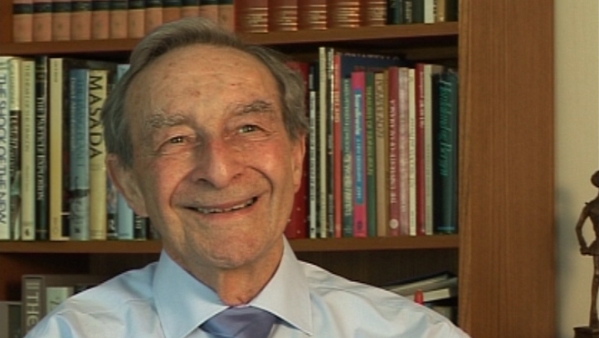NEXT STORY

Working hard as a part-time student
RELATED STORIES

NEXT STORY

Working hard as a part-time student
RELATED STORIES


|
Views | Duration | |
|---|---|---|---|
| 11. Physical chemistry: thermodynamics | 163 | 01:04 | |
| 12. Inorganic chemistry classes | 132 | 00:25 | |
| 13. The Oxford lecturer who blew his fingers off | 153 | 01:12 | |
| 14. Gustav Adolph Ampt: 'Near enough is not good enough' | 1 | 97 | 01:54 |
| 15. Working hard as a part-time student | 1 | 89 | 00:56 |
| 16. 'The Doc' | 96 | 01:23 | |
| 17. 'The girls thrashed us' | 105 | 00:17 | |
| 18. Passing with 'flaming' colours | 100 | 01:39 | |
| 19. Benefits of coming top of the class | 95 | 02:06 | |
| 20. JS Anderson | 91 | 06:33 |


And finally, for analytical chemistry, we had Gussy Ampt, Gustav Adolphus Ampt, who is, I think, generally recognised as the greatest analytical chemist in Australia at the time and was, of course, very important in forensic medicine with doing chemical analyses for police and crime detection. His famous remark, I recall, was, 'Near enough is not good enough'. In those days, number one exercise was to calibrate a box of weights. You actually had to take your box of weights you couldn't assume that it was accurate, you had to calibrate it. You weighed by swings, which was probably, I think before your...
[Q] I was still doing it when I worked with him, Norman, so yes.
Okay, weighing by swings so that each weight took between quarter of an hour and 20 minutes,but you got it to a tenth of a milligram. And then, of course, you had to calibrate your burettes and your pipettes; you mustn't blow down a pipette, you must put your thumb on top and squeeze it, heat it up and that blows the last drip out. You had to measure the temperature of the water, look up tables of density; it took us weeks before we even started chemistry, doing all this wretched calibration. I don't think the students nowadays would tolerate this. They put it on a balance, in fact it's simple, a single-pan balance so it's not a bilanx which is two pan, it's a single pan balance these days, but... then the answer is printed out and if it appears on the printout it must be right, so that's it, that's just a difference.
Norman Greenwood (1925-2012) was born in Australia and graduated from Melbourne University before going to Cambridge. His wide-ranging research in inorganic and structural chemistry made major advances in the chemistry of boron hydrides and other main-group element compounds. He also pioneered the application of Mössbauer spectroscopy to problems in chemistry. He was a prolific writer and inspirational lecturer on chemical and educational themes, and held numerous visiting professorships throughout the world.
Title: Gustav Adolph Ampt: 'Near enough is not good enough'
Listeners: Brian Johnson
Professor Brian FG Johnson FRS, FRSE, FRS Chem, FAcad Eu, FAS. Professor of Inorganic Chemistry University of Edinburgh 1991-1995, Professor of Inorganic Chemistry University of Cambridge 1995-2005, Master Fitzwilliam College Cambridge 1999-2005. Research interests include studies of transition metal carbonyls, organometallic chemistry, nano- particles and homogeneous catalysis. Professor Johnson is the author of over 1000 research articles and papers.
Tags: Australia, Gustav Adolphus Ampt
Duration: 1 minute, 54 seconds
Date story recorded: May 2011
Date story went live: 25 November 2011